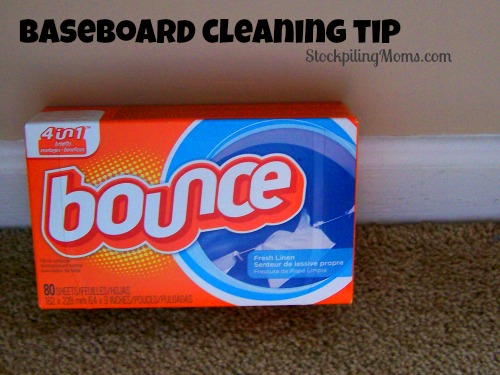How to Use an Envelope Budget System
The Envelope Budget System has been a trusted method of budgeting for years, and one that is simple to implement and can result in long term success. Many people are intimidated about the idea of budgeting. Being honest about your money and where it is going each day can feel scary at first, but the truth is once you get started on a good budget, it becomes hard to live any other way! If you are looking for an efficient way to start budgeting your hard-earned cash, look below at some helpful tips on how to use the envelope budget system.
How to Create an Envelope Budgeting System:
This system is great for those new to the budgeting world, and it is a system you can follow without a lot of fuss. Take a look below at how to get started so you can start gaining control of your finances NOW!
Supplies Needed for The Envelope System
- a package of basic stationery envelopes
- markers
- shoe box or container for holding the envelopes
A note about supplies: Feel free to use colorful envelopes to bring a little life to the budgeting process. If you create a system that feels fun and inviting, you will feel more inclined to use it. Some people also like to have color-coded envelopes, so this is something to consider when shopping for the envelopes you wish to use for this project.
Decide What System to Use
The type of system you use will be based on your pay schedule, If you are paid monthly, you will create a budgeting system for the month. If weekly, your system will be designed for the week. The idea if for the system to last you from one pay cycle to the next.
Budget by Listing Your Financial Obligations
The first thing you need to do is write down a list of your financial obligations. This should include anything you have in the debt category like credit cards or outstanding loans. If you are struggling with debt, you may want to begin with our steps to get out of debt system.
REMEMBER this will be based on if you are doing a weekly/bi-weekly/monthly plan based on your pay schedule. This should include bills such as rent or mortgage, utilities, gas, and groceries. Include all essentials FIRST. Write down each obligation and put the amount owed next to it.
Once essentials are listed, include non-essentials. This could be items such as entertainment, coffee trips, dining out, movies or movie rentals, etc.
Allocate Your Funds
Look at the amount you earn with each paycheck. You will now take those earnings and allocate them to the essentials you listed. For example, your list may look like this:
Monthly Take Home Pay: $2500
- Mortgage: $1000.00
- Water: $75.00
- Electricity: $125.00
- Cable/Internet: $100.00
- Cell phone: $100.00
- Gas: $200.00
- Groceries: $400.00
Total for essentials: $2000.00
If you aren’t sure how to budget these amounts, you can start with our tutorial on how to create a household budget.
You will then take the remaining balance and apply it to savings and non- essentials. It may look something like this:
- Savings: $200.00
- Entertainment: $100.00
- Dining out: $100.00
- Clothing: $100.00
If you haven’t started a savings plan, you should check out our 52 Weeks Savings Plan as an easy beginner option. This plan can be used with the envelope budget system easily.
PLEASE NOTE your allocations and needs may look much different than this. This is just to give you an idea of how to list your needs and break up your take-home pay based on those needs.
Create Your Budget Envelopes
Now that you have an idea of what your needs are, how much to allocate for them, and how much you have leftover, you can create your envelopes. Assign one category to each envelope. For example, you will have a mortgage envelope, cable/internet envelope, grocery envelope, etc.
Using a cash system, place the amount needed for each allocation in the envelopes. Write the month on each envelope as well. File the envelopes into your container of choice.
Track Your Spending
When a bill is paid or money is removed from an envelope, write it down on the back of the envelope. This will help you document what you spend and give you an idea when you are running low.
For example: if you take $50 out of the grocery envelope, mark the date on the back as well as the amount you removed.
Be Firm With Your Spending
The idea with the envelope budgeting system is once the money is gone, it is gone until the next payday. If you find yourself running low on grocery money, for example, it is time to tighten your spending or remove extra funds from the savings or entertainment envelope.
Roll Over Your Savings
As you tighten up your spending, you might notice that you have some extra money in some of the envelopes at the end of the month. Yay! Decide how you want to allocate this money. Some people like to roll it over to the next month, while others like to take that savings and put it in their savings envelope.
Re-Evaluate
After a few months, you might notice that some of your calculations need a second glance. For example, you might need more gas or groceries money each month than you originally thought. No problem!
You can easily re-evaluate after a few months and set new amounts for yourself based on your earnings.
Get Creative
One of the best ways to stay in budget is to get creative! If you notice the entertainment envelope only has $10 left in it, look for free events in your city you can enjoy. Try an at-home movie/game night, or look for Groupons to help you enjoy more experiences for less.
As you can see, the Envelope Budget System is a great way to get your finances in check. Give it a try and see if it can help you reach your financial goals!

Melissa is a football and soccer mom who has been married to her best friend for 24 years. She loves sharing recipes, travel reviews and tips that focus on helping busy families make memories.







